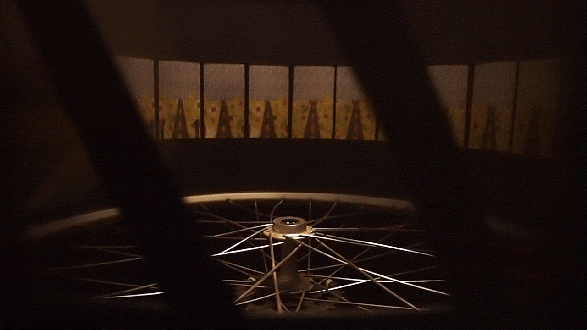
‘What does Pink Floyd’s Dark Side of the Moon mean to you?
‘A faded black T-shirt with that prism logo, and the hazily remembered times you had while wearing it? Or maybe the “ka-ching” of “Money” blasting from your dad’s car radio on the way back from the beach. Perhaps your playlists contain not Floyd but remixes and remakes by The Orb or the Flaming Lips. Or just possibly your grandfather who had dementia came to live with you when you were in seventh grade, and you’d play the record every afternoon in your den because that’s where the stereo was, and one day, after your granddad hadn’t said a word for months, he lifted his head and muttered, under his breath, “this is such very strange music,” and, suddenly realizing that there was someone still in there, your young head exploded with dark forebodings too.
‘Whatever meaning is encapsulated by Pink Floyd’s immersive ode to losing your mind amidst post-war Western capitalism, you’ll find it and much more in British-born, New Hampshire-residing filmmaker Jodie Mack’s early career masterpiece, Dusty Stacks of Mom: The Poster Project. Performed — yes, performed — at festivals ranging from Rotterdam to RIDM to True/False, Dusty Stacks of Mom is Mack’s 43-minute animated film about the collapse of her mother’s rock-and-roll merch biz. Against sequences ranging from psychedelic abstraction to her mom at the studio to explosive collages containing not just that light-shot prism but Tony Montana, Pamela Anderson, and the company’s other T-shirt/badge/poster printing projects, Mack sing-songs an album-length cover in which Floyd’s tunes are rewritten (“Us and Them” becomes “Supply and Demand”) to chronicle not just the demise of her mom’s company but physical media in general. It’s a smart, improbably charming, and generally mind-blowing work.
‘An experimental animator who studied at University of Florida and the School of the Art Institute of Chicago, Mack’s “camera-less” first films were “goopy, gunky, excited, fast-paced animations — I’d stick things to the film’s surface,” she says. From this work grew an interest in “discarded materials, cultural detritus, and waste.” She explains, “I’m interested in how people perceive art outside of art and cultural circles, how we experience art in our everyday life, and how similar formal attributes can play out in the museum and in the Dollar Store.”
‘Mack began Dusty Stacks of Mom right out of grad school, traveling to Florida to shoot at her mom’s warehouse before it closed down. But it wasn’t until a few years later when, heavily influenced by the experimental animation she was teaching at Dartmouth, “it all started to make sense.” “I wanted to create this doc centered around this album and how it functions in an industry full of multiples,” she says. “I wanted to convey information in an interesting way. Voiceover and text can be boring, so I decided it should be song.” Mack got various musician friends to do instrumental covers of each track, and when she got frustrated during the sound mix, Images Festival Artistic Director Kate MacKay suggested she do it live — a perfect strategy for an era in which arthouse theater admissions are declining and films themselves are part of a digital media that’s being discarded. “Having a live performance ups the stakes,” Mack says. “It increases the reasons for us all to be convening together in a room. Each experience is unique; the imperfections play it differently each time.”
‘Upcoming for Mack is work on a project about “fabrics, objects, and how they travel and represent culture in faraway lands.” Describing it as a “travel play variety roadshow,” Mack says, “It might just be like the early days of cinema — I’ll talk, sing songs, screen the rushes, and maybe never even do a serious edit.” — Scott McCauley
___
Stills
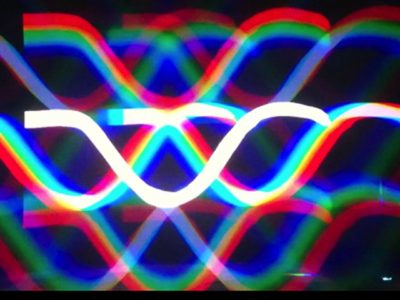
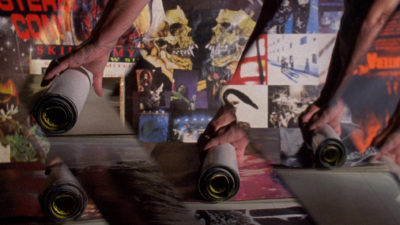
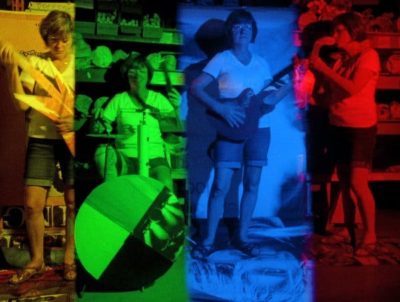
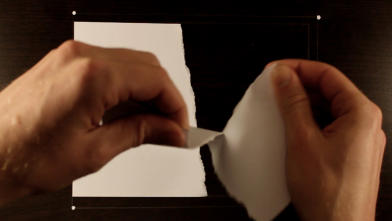
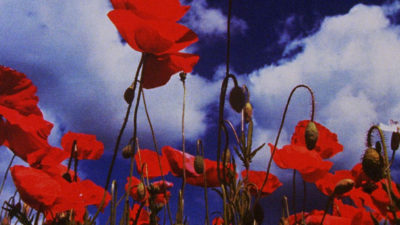
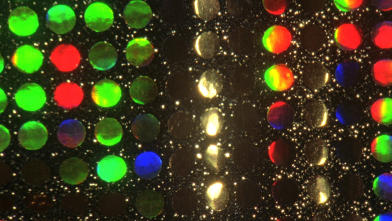


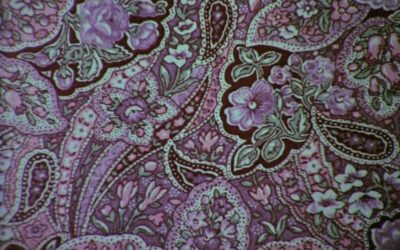
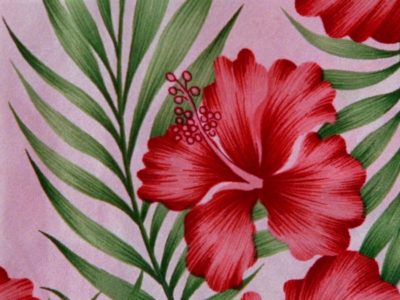
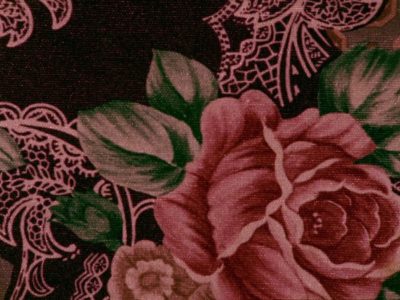
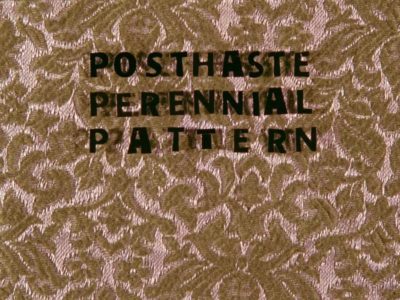


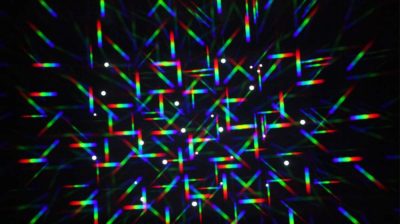
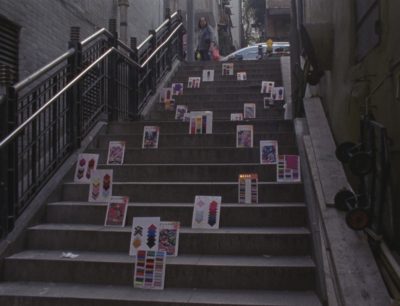
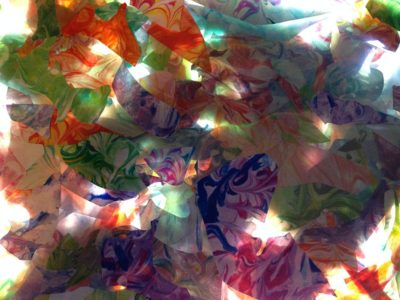
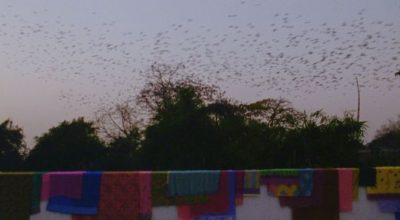
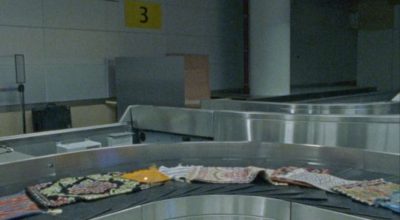

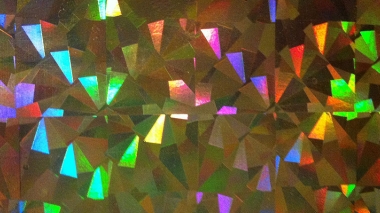
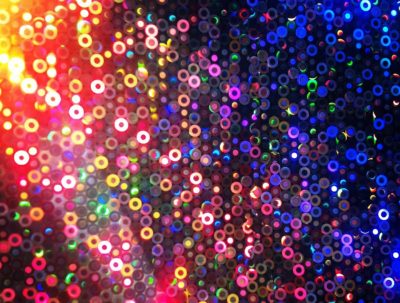
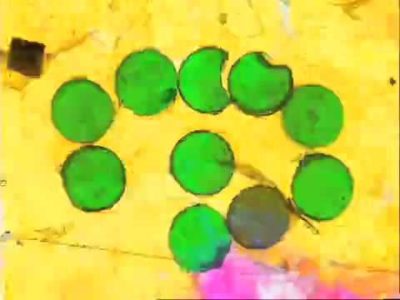
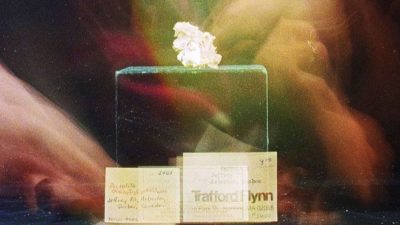


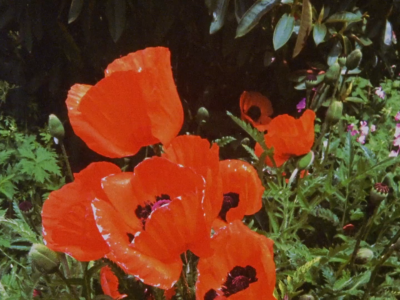
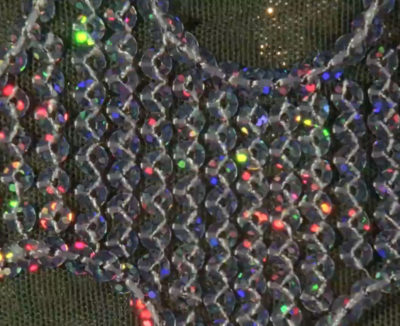
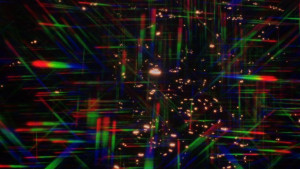

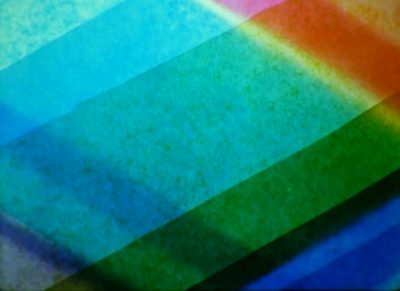
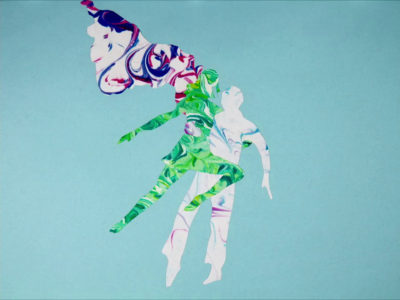
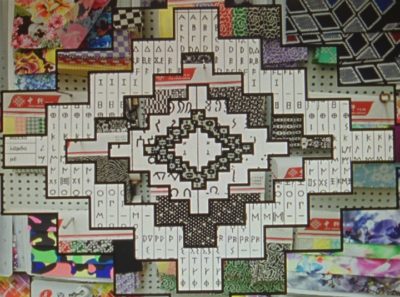

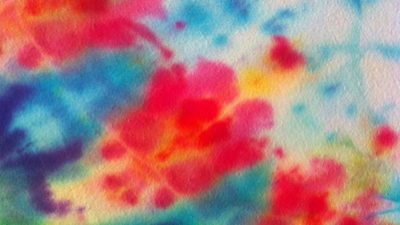
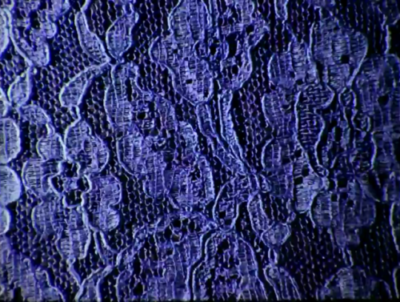
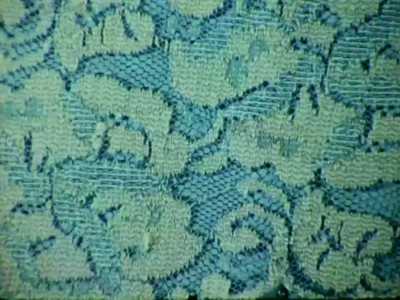







____
Further
Jodie Mack Site
Jodie Mack @ IMDb
Jodie Mack @ Vimeo
Jodie Mack @ Light Cone
Jodie Mack @ Canyon Cinema
“I WANT TO FIGHT AGAINST THE IDEA OF CINEMA AS A REPRODUCIBLE OBJECT”
The Grand Bizarre (Jodie Mack, US) — Wavelengths
How Jodie Mack’s “Curses” Was Made
INTERVIEW: JODIE MACK
Experimental Animation and Abstraction with Jodie Mack
Edge of Frame: The Films of Jodie Mack
JODIE MACK with Leo Goldsmith
Interview: Jodie Mack @ Film Comment
A Visual, Mesmerizing Journey of Clothing and Fabric Around the World
FERN SILVA and JODIE MACK / You Snooze You Lewis
Queen Bee: Jodie Mack in Locarno
Vincent Warne reviews “THE GRAND BIZARRE” by Jodie Mack
Jodie Mack | Edge of Frame
Interview with Jodie Mack by Jennifer Stob
Going to the Dark Side with Animator Jodie Mack
____
Extras
Jodie Mack Profile – News Media Camp
Jodie Mack’s trailer for the 49th Ann Arbor Film Festival Trailer
Screensavers 1-7 (in-progress)
Yard Work is Hard Work (2008)
_____
Interview
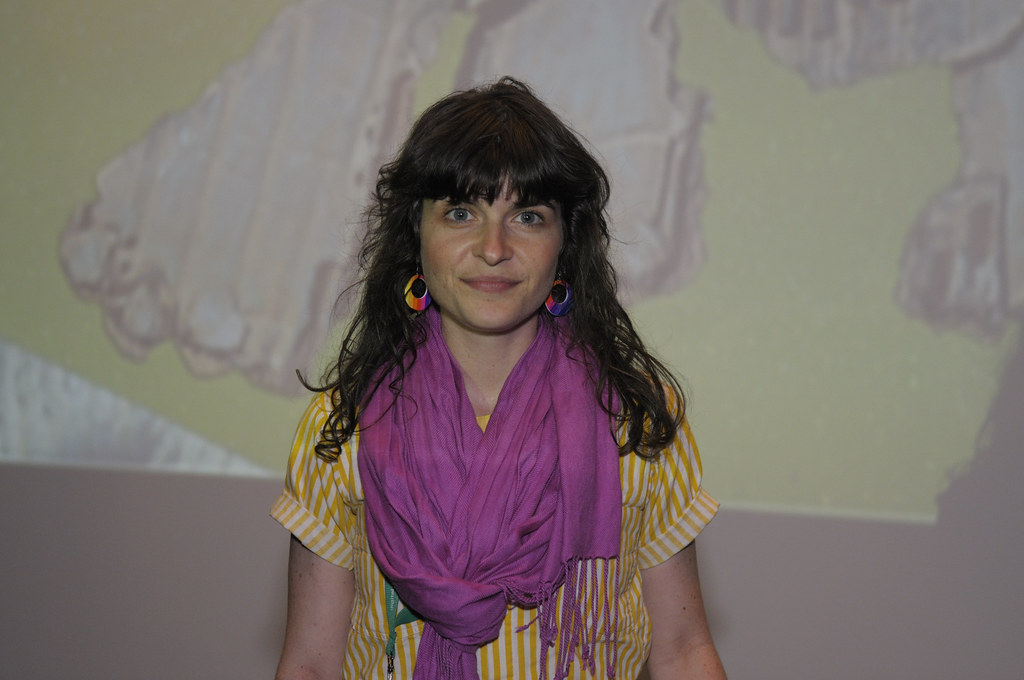
Desistfilm: I think my first question would be, how did you start in the world of filmmaking? How you came around experimental cinema?
Jodie Mack: I think my interest in cinema came out of my interest in the theatre. First as a performer and then as a student of the history of playwriting and directing, which then led me to become interested in film studies. So, I thought I might write about cinema and then ended up in an experimental filmmaking class and thought that it could be something that could combine all the disciplines… I remember getting really excited in school watching films like Ghosts Before Breakfast or A Man With a Movie Camera, and just images of theater production – how early cinema was such an extension of the theatre. It always was the theatre for me, I think.
Desistfilm: So, when did you decide that animation was your thing?
Jodie Mack: Well, I think that generally, the type of experimental cinema that I learned about very early on was, of course, camera-less filmmaking, because I was in a school that didn’t have many cameras. We were doing film production within a film studies department, so nothing too flashy on the production level – just doing things pretty DIY, working camera-less-ly, which of course, can be defined as a type of animation in itself. That really, I think, grounded my interest in filmmaking through the lenses of different materials – like the relationship to the plastic arts, or also to commodities – things that you can use to make images on the film. That became a central concern.
Desistfilm: The Grand Bizarre is your first feature film. It’s sort of a mixed venture into travelogue filmmaking and your usual work with materials. How do you put together the semiotic significance of your materials alongside this aspect of travel? What’s the relation between them?
Jodie Mack: You know, The Grand Bizarre – it’s such a crazy form and huge project that… I basically had to make certain decisions to make it move forward. Of course, the idea of the travelogue became very important. Again, I thought about early cinema, about cinema’s relationship to the sewing machine, about the cinema’s relationship to train travel, and the development of ground travel which then became a development in sea travel, or air travel, and how the cinema became a sort of portal to take you somewhere else (something which of course has been disseminated and seen through many ways now, especially when we’re on the internet, this idea of not needing to actually move physically but still being able to go somewhere) was at the project’s core.
Something else I thought about were simulation rides; I remember experiencing them in the early nineties. And, you would go into a thing, and the seats would move too. And you were on an “adventure,” on a “safari,” you’re flying out in space… And of course this is all related to where we are now with virtual reality, this idea of a portal into somewhere else. This portal for me has always been in the rectangle of in the proscenium of the theater or of the church, or of the cinema, and of course it’s a sort of a flat plane but it’s also becoming more peripheral now, technologically. I wanted to be able to take the viewer into different physical places and to different dimensions and to be able to, in some ways, use the idea of close-up textiles as stand-ins for things like birds-eye views, views of landscapes (or straight ahead views of landscapes). And, I wanted to make this connection between an impulse to represent reality (or to mirror reality, a notion of mimicry and diegesis…) Is good art a great rendering of something? Or, does it create an essence? I wanted to prod at these unanswered questions, the ones present no matter the technology that develops, if that makes sense.
Desistfilm: Hoarders Without Borders and many other films you do remind me of a sort of “catalogue cinema” in the likes of Yervant Gianikian and Angela Ricci Lucchi’s Ghiro Ghiro Tondo (2007), where they shoot these very old toys from the time of Franco’s dictatorship. Those toys symbolize the physical reality of what meant to be alive in the times of Fascism. Sometimes the archival images might seem innocuous in a way, but they are quite complex since they present a complete allegorical meaning in themselves. When you work with materials, what are your expectations regarding what should be the underlying narrative behind them?
Jodie Mack: I think the approach to the material changes depending on each different film that’s at hand. For example, The Grand Bizarre is kind of a culmination of a lot of these different, shorter “fabric films”, which started out as personal inventories. The first couple of them started while I was moving actually, and they were a record of everything I owned: the stripe patterns, the flower patterns… And, then gradually I started working with other people to borrow their collections and gained a reputation for being into collections and stuff. And, people would send me things. For example for my film New Fancy Foils, I made that film with a collection of these sample books owned by the animator George Griffin. He sent them on the mail and said: “I know that there’s a film here for you one day”.
Then of course, in The Grand Bizarre, I moved into things like textile archives, which presented the question of what to do with ancient textiles – you can’t work with them, you know, you shouldn’t really touch them, they could fall apart; you might not be able to get access to them… It’s much easier to get a digital copy of it. And, also, the minute that you enter a textile archive, you enter all these questions like: “Who owns these textiles?” Where were they made vs. where are they being exhibited and who has collected (and potentially edited) the information on them?
That then led me to something like Hoarders without Borders. I feel like that was the first piece I made with a formal collection. This was a physical donation from one person, Mary Johnson, to the Harvard University Mineralogical and Geological Museum. Because of that, I had no choice in the order that I could shoot it. That’s another thing that emerges from all the different inventories or quasi-inventories that I might do: rules of organizational systems (in this case: geological sciences). When I make a film with paisley patterns from around the house or something like that: I get to decide how things are arranged in different ways throughout the film in chronological order, in order of size and color, or things like that. So, in many ways my goals with each of these things just give each material a new life, a movement in a way that’s sort of fluid and open, and allows it to have a new voice through photokineticism or something like that.
Desistfilm: There’s a course of thought that comes around when looking at your images: Some of your films where the materials you’re filming are part of a process of labor. This can go all the way back to make us think about the methods of production: who’s making these fabrics?, for example, or thinking about the process of capitalist production, and stuff like that. And I was wondering if you think the playful nature of your work could be seen as something non-threatening behind the underlying deep strata of it all?
Jodie Mack: I think that my films are carrying a lot of weight of the animated film and the handmade film in general. They can be seen as playful, colorful or fast moving, and they are also posing a duality between the relationships with the product: whether one is critical of it or seduced by it. It’s like where we’re critical of the labor practices that go into making our clothes by tackling our process of buying our clothes and buying our bed sheets. Allowing for this duality or this duplicity of perception on the viewer’s part is at once freeing, but it’s also a risk, because you want the film to be taken seriously.
But, I don’t actually believe that the experimental context or art context is actually the place to have the discussion about capitalism and objects. This history has hands that are so covered in blood, it’s also like: the revolution is never happening here. So, I also want to reject a mode of seriousness or pretention that is feared by the worker, in the language of experimental film, where so much of contemporary art and experimental film is seen and made for elite circles with a lot of education. I think at this point we need to really consider the notion of accessibility as a way of getting different circles excited about the possibilities of these types of cinema.
_____________
13 of Jodie Mack’s 32 films
_____________
Four Tet A Joy (2005)
‘A collaboration with Four Tet for the album Everything Ecstatic (Domino, 2005). Direct animation with stained-glass contact paper, ink, and acetate.’ — JM
the entirety
_______________
Posthaste Perennial Pattern (2010)
‘Posthaste Perennial Pattern fuses synthetic floral fabrics in a stop-motion animation that pulsates as if capturing a garden in bloom within a single moment. Mack playfully subverts the association of these textiles with stable, quiet household settings and furniture through this frenzied presentation of patterns. The interplay between the imagined passive domestic interiors that the patterns were intended to decorate, the graphic, two-dimensional illustration of organic matter, and the technologically imposed chaos becomes further amplified on the electronic billboards of Times Square. Jodie Mack created Posthaste Perennial Pattern in response to Miriam Schapiro’s 1973–74 collage-painting, The Beauty of Summer. Schapiro, a pioneering feminist artist, championed and referenced women’s domestic arts and crafts in her work, and her approach to everyday material continues to inspire artists today.’ — Museum of Art and Design
the entirety
Times Square performance
______________
Point de Gaze (2012)
‘Jodie Mack shoots analogue film and uses all manner of existing materials to create dizzying patterns. Point de Gaze features lace and intertwines gossamer threads into an exquisite optical film. Minute details become visible when projected.’ — IFFR
the entirety
_____________
Persian Pickles (2012)
‘A swimming study of paisley patterns traces this decorative motif from its origins in Persian weavings to appearances Irish quilting and American Counterculture. Extending on the stroboscopic tradition of anti-animation, this short material study fixates upon discarded materials to examine the decorative and its relationship to the cycles of industry and evolving modes of production.’ — JM
the entirety
_____________
[bike-cycle] at Mono No Aware VI (2012)
‘This is the fourth animation I’ve made for the bike zoetrope, though most of the animations have gone undocumented. Sean Hanley shot this video as documentation for the 6th annual Mono No Aware festival of expanded cinema and live performance.’ — JM
in action
_____________
Let Your Light Shine (2013)
‘Eye candy as a special treat. Let Your Light Shine is the ultimate Spectrum Short film, a photokinetic stroboscopic spectacle for spectacles. A work in the tradition of the absolute animation film of the 1930s, which requires prismatic glasses to achieve the maximum result.’ — IFFR
the entirety
_____________
Dusty Stacks of Mom: The Poster Project (2013)
‘Interweaving the forms of personal filmmaking, abstract animation, and the rock opera, this animated musical documentary examines the rise and fall of a nearly-defunct poster and postcard wholesale business; the changing role of physical objects and virtual data in commerce; and the division (or lack of) between abstraction in fine art and psychedelic kitsch. Using alternate lyrics as voice over narration, the piece adopts the form of a popular rock album reinterpreted as a cine-performance.’ — letterboxd
Trailer
_____________
No Kill Shelter v 1.0 (2013)
‘This video documents an exhibition of No Kill Shelter, an ongoing project featuring an array of objects born from interests in materials, waste, and old devices: screensavers. Animated loops inspired by mesmerizing computer graphics play on discarded monitors and computers hand decoupaged with wrapping paper. Highlighting rapid technological obsolescence and the role of abstract animation in everyday life, the screensavers question the preciousness and fetishization of “antiquated” tools and the relationship between fine art, design and craft.’ — JM
in action
_____________
Undertone Overture (2014)
‘Undertone Overture evokes an abyssal, aquatic abstraction cruising out to the cosmos and back to coast. Swirls and swooshes of colour and texture boil to pelagic pulses of deep-sea hydrographic exploration, considering the cultural and historical-referential properties of tie-dyed fabric. From ancient hand-practised dyeing techniques to hippie-stigma’d head shop merchandise to amorphous abstract paintings, the formal elements of tie-dye locate the tension regarding the aesthetic value of forms of fine art and craft. Paired in the gallery with resort-born lounge chairs, the installation looks out to sea, reflecting on coastal life and the parallel forms of spectatorship shared between natural phenomena and abstract cinema.’ — JM
in action
____________
Curses (2016)
‘Made entirely by hand from cut marbled paper, this odyssey of remnants re-imagines a dream-sequence love.’ — JM
the entirety
____________
Something Between Us (2016)
‘Something Between Us is a choreographed motion study for twinkling trinkets, beaming baubles, and glaring glimmers. A bow ballet ablaze (for bedazzled buoyant bijoux brought up to boil). Choreographed costume jewelry and natural wonders join forces to perform plastic pirouettes, dancing a luminous lament until the tide comes in.’ — IFFR
the entirety
____________
Wasteland No. 1: Ardent, Verdant (2017)
‘Long-take arthouse cinema beware: Jodie Mack is parking her tanks on your lawn and planting a flag reading “Long Live Editing!”. On the one hand, Wasteland No. 1 is a meditation on the connections between natural and electronic ecosystems to be taken alongside Lutz Dammbeck’s The Net and Adam Curtis’s All Watched Over By Machines of Loving Grace. What those films achieved through argument, though, Mack achieves through pummelling strobe editing and saturated, almost technicolor landscapes. A joyous demonstration that the structuralist film-making of Peter Kubelka, Len Lye and Stan Brakhage is alive, well, and evolving in the 21st century.’ — Graham Williamson
the entirety
___________
The Grand Bizarre (2018)
‘A film of boundless energy and ingenuity, the first feature by American animator Jodie Mack is a color-coordinated, rhythmically tuned fantasia for the senses. Filmed over five years and in as many countries, this all-analog travelogue finds thousands of textiles and printed designs dancing across locations from Mexico to Morocco to India. With handmade charm and a topical touch, Mack traces the industrial cogs of fabric production and consumption that make our material world turn. A motion picture in the truest sense.’ — Film at Lincoln Center
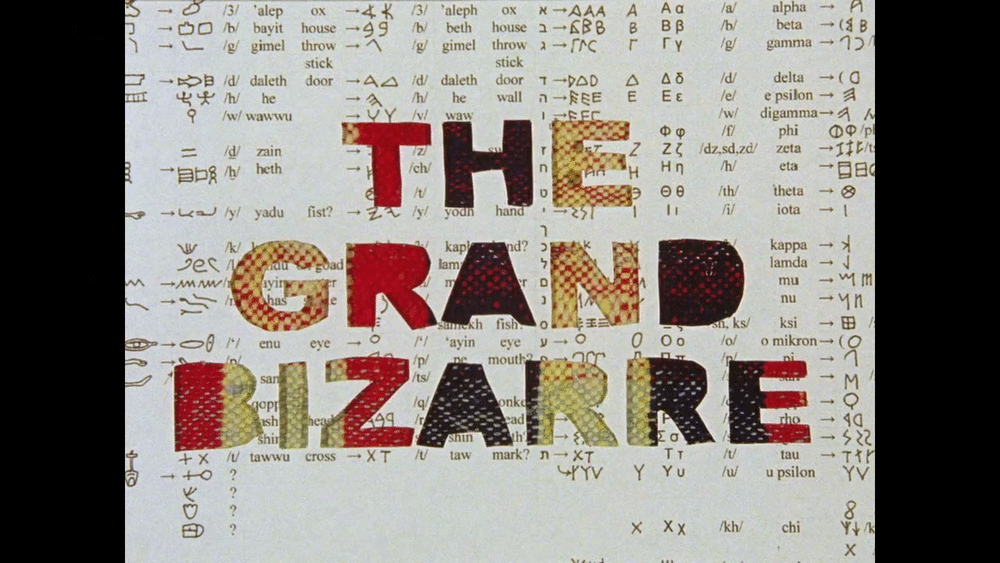
Jodie Mack on The Grand Bizarre | Projections at NYFF56
*
p.s. Hey. ** David Ehrenstein, I’ve had La Monte Young in group posts at least, but I’ll have to check to see if I’ve spotlit his work in an exclusive. If so, I’ll revamp it. If not, I’ll endeavor to make one. I’m hoping to get to LA in early June, but that’s not a done deal yet. ** _Black_Acrylic, Hi, Ben. I’m glad the gig interested you. Yes, I agree that Joe Satkowski’s Frataxin project is very interesting. I’ve only just discovered it. I don’t know Franziska Lantz at all. Thank you. I’ll plunge through that link today. Best Monday! ** Cautivos, Hi there! Thank you. I’m sorry your holidays weren’t so great. Mine were okay mostly because I tried to completely ignore them, ha ha. Thank you about ‘Guide’. That means a lot. Your English is totally good, don’t worry. Thank you for coming back in here. How are things going with you now? I hope to see you again soon, and take care. ** Steve Erickson, I think you might very well be right. I’m glad that Ubik MCDXCDII caught your ear. I have heard Scuru Fitchadu, yes. Yes, it sounded very interesting, and I’ve meaning to investigate him more. I will. Thank you. Intertitles sounds like a good solution. Adding another formal element can often be a nice extra energiser. ** Bill, Hi. Yeah, the name. Feisty bunch. Aki and Paul Clipson did a number of collaborative works. I think there’s a DVD devoted exclusively to their collaborations. Costes has an ongoing presence over here, naturally, but he has seemed to up his activity and profile recently. Philip Best’s Amphetamine Sulphate press just published a book by him this month. Is your rig revived? I’ve got a bead on the new Shelley Jackson, and thanks for the interview alert and link. I’m on it. ** Right. Today I focus the blog on a filmmaker I think many you might not be familiar with. (I suppose that’s often the case with my filmmaker posts, but nonetheless … ). Her films are beautiful and I encourage you to give yourselves the discovery and the pleasure today. See you tomorrow.




 Now available in North America
Now available in North America 
Jodie Mack’s work is lovely.
Today is MLK Day Y’all, so —
Here’s My Latest FaBlog: Shall We Overcome?
Dennis, We have off today for MLK’s birthday. I’ve spent this 3-day weekend…sleeping, eating, gym-ing, watching too much TV, and not doing much otherwise. A little disappointed in myself for wasting so much time. I’ll try to make up for it a bit today.
This year so far has been really…slow. I don’t know what to make of it. I notice that everybody seems to be driving and walking really slow. I keep getting behind people driving 10 to 15 miles under the speed limit or walking so slow they might as well be crawling. Hmm. And they’re not a bunch of 90-year-olds. Young people, old people, girls, boys, everybody. All seem to be walking at paint-drying pace. What the hell?
Bad News
Could Yuri take over for him?
Thank you for this intro to the very beautiful work of Jodie Mack. Some of it puts me in mind of the sadly departed Scottish animation artist and musician Katy Dove.
I hope THE GRAND BIZARRE gets some form of US distribution.
Did you see that Hatari’s debut album came out last week?
Thank you for the introduction to Mack. Look forward to diving into her work tonight.
I’ve had unexpected success taming internet and caffeine addictions. I’m starting to feel better physically and have more self-respect about how I’m using my time, but am still behind on things from several weeks of brooding which I guess were productive in their way. I have trouble with school and authority figures but deadlines are relatively lax and grades are relatively unimportant. It’s hard for me to make meaningful changes and not force things while also not feeling like a lazy failure.
It looks like I have a freelance job offer from a reputable production company to translate commercial screenplays and work as a production assistant. The people who run the company seem flaky so I hope it actually pans out. In any case I’m setting myself up as a registered freelancer so I can work gigs above-board. Double taxation is brutal. I’m sure you can relate.
What’s new with you?